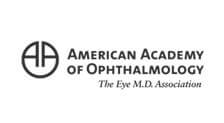Don’t Skip Your Annual Sight-Saving Exam!
Move over, Turkey day! November is Diabetes Awareness Month, and it is also Diabetic Eye Disease Awareness Month. But there is never a bad time to shine a spotlight on this debilitating and potentially sight-stealing disease. Most recent stats report that diabetes affects more than 34 million people in the United States. That’s more than one in 10 people dealing with diabetes!
Diabetic Eye Disease is a real threat to anyone who suffers from diabetes. There are several kinds of diabetic eye disease, but all of them have the potential to result in vision loss and even blindness. At Carter Eye Center, we care about you, your health, your eyes and your vision!
Five Fasts Facts to Know About Diabetes and Your Vision
- You can develop diabetic eye disease without showing ANY symptoms. In fact, diabetic eye disease is the leading cause of blindness among adults between the ages of 20 and 74.
- At any given time, people with diabetes could develop diabetic eye disease. When blood sugar levels remain elevated over a long period, complications can occur throughout your body, including your eyes.
- Diabetic retinopathy is the most common diabetic eye disease. It is caused by changes in the blood vessels of the retina, which is the light-sensitive tissue in the back of the eye. As the disease progresses, blood vessels become blocked and prevent areas of the retina from receiving vital blood and nutrients.
- Diabetic macular edema is a complication of diabetic retinopathy. It is caused by damaged blood vessels that swell and leak fluid into the macula (which is responsible for sharp, central vision). Over time, this swelling can lead to vision loss.
- Other vision complications from diabetes include glaucoma and cataracts. People with diabetes are more likely to develop cataracts at a younger age and are twice as likely to develop glaucoma as are non-diabetics. Regular eye exams, early detection, and timely disease management can help protect against further vision loss.
If you have diabetic eye disease, you face a very real risk of losing your vision. However, it’s possible to reduce the risk of diabetes-related blindness. You have the power to help protect against diabetes-related vision loss! You should have an annual dilated eye exam. It can help detect things that a regular vision test cannot, and it can help detect more serious vision problems.
Don’t Skip Your Annual Sight-Saving Exam
Researchers at Wills Eye Hospital in Philadelphia found that more than half of patients with diabetes skip an annual comprehensive eye exam. They also discovered that patients with less severe diabetes and no eye problems were most likely to neglect to have these recommended yearly checks.
Annual comprehensive eye exams are critical as they can reveal hidden signs of disease, allowing for more timely treatment. This is why the American Academy of Ophthalmology (AAO) recommends people with diabetes have them annually or more often as recommended by their ophthalmologist, a physician who specializes in medical and surgical eye care.
“Vision loss is even more tragic when it is preventable.
If you have diabetes, it is so important to have a yearly comprehensive eye exam.”
Harvey Carter, MD, board-certified ophthalmologist and founder of Carter Eye Center
At Carter Eye Center, we want our patients to enjoy a high quality of life while managing their diabetes. Dr. Carter has extensive experience in the diagnosis and management of diabetic eye disease. If you have diabetes (even if you aren’t experiencing any eye symptoms), schedule a comprehensive eye exam at Carter Eye Center today to protect yourself from preventable vision loss.









